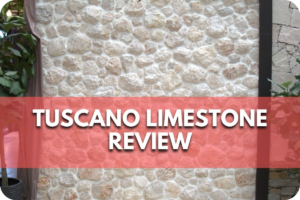Installing stone surfaces seems straightforward, but hidden costs can surprise many homeowners.
These unexpected expenses, from delivery fees to installation challenges, can significantly inflate your budget, causing stress and financial strain.
This article illuminates the lesser-known costs associated with stone installation. By understanding these potential financial hurdles in advance, you can better plan and budget for your project, ensuring a smooth and cost-effective renovation.
Initial Material Costs

When planning for stone installation, the initial purchase price of the stone itself is a significant expense that can vary widely based on several factors.
The type of stone chosen is the primary determinant of cost. Luxurious options like marble and granite are more expensive due to their aesthetic appeal and durability. More budget-friendly choices, such as travertine or limestone, offer a similar aesthetic at a reduced price.
The cost of stone is often quoted per square foot, and this can range dramatically little, depending on the stone’s rarity and origin. Imported stones usually carry higher costs due to transportation and import taxes.
Additionally, the thickness and finish of the stone can also affect the price; thicker slabs and more elaborate finishes, such as polished or honed surfaces, typically command higher prices.
Buyers must request detailed quotes that break down all the costs associated with the stone, including per unit cost and any bulk discount options. Understanding these details helps accurately forecast the budget for sufficient material to complete the project.
Labor Costs

Labor costs for stone installation can significantly impact the overall budget and vary depending on the complexity and scope of the project. Typically, labor charges are calculated either per hour or per square foot, and this rate is influenced by the type of stone, the installation method, and the geographical location.
However, installations involving intricate patterns, heavier or larger slabs, or challenging locations like staircases or tight spaces may increase these costs substantially.
Additionally, the expertise required for specific stones like marble or granite, which require precise cutting and careful handling to avoid damage, can also elevate labor expenses.
Experienced contractors often command higher fees, reflecting their ability to minimize waste and ensure a high-quality finish that will last.
It’s essential to obtain detailed quotes from several installers to understand the full scope of labor costs. These quotes should outline the time frame for the project, the number of workers needed, and any special equipment required, providing a comprehensive view of the labor investment necessary for successful stone installation.
Additional Materials and Supplies

Beyond the cost of the stone itself, several additional materials and supplies are essential for a successful installation, which can add to the overall expense. These include adhesives, grout, sealants, and backing materials, each vital for durability and aesthetics.
- Adhesives are necessary to affix the stone to surfaces securely. The type varies depending on the stone and installation location, with prices ranging from moderate to high, especially for waterproof or heat-resistant varieties used in bathrooms and kitchens.
- Grout fills the spaces between stones with color-matched options to enhance the overall look. Epoxy grout, known for its durability and resistance to staining, is more expensive than traditional cement-based grout but offers longer-lasting results.
- Sealants protect porous stones like marble from staining and water damage. High-quality sealants are crucial for maintaining the stone’s appearance and can be a recurring cost depending on the stone’s porosity and the installation environment.
- Backing materials, such as cement boards or waterproof membranes, are required for installations in moisture-prone areas. These materials ensure the longevity of the installation but increase the initial outlay.
Accurately estimating the cost of these supplies is essential. They are often overlooked in initial budgets but are critical for ensuring the quality and longevity of the installation.
Site Preparation and Pre-installation Work

Site preparation and pre-installation work are critical aspects of stone installation that can incur hidden costs. This phase involves ensuring the installation area is ready to support the weight and structure of the stone, which often requires specific adjustments and additional work.
- Surface Leveling: One of the first steps in site preparation is leveling the surface where the stone will be installed. Any unevenness can lead to improper stone laying, potential cracking, and long-term structural issues. Leveling might involve grinding down high spots or filling in low spots with leveling compounds, which adds to material and labor costs.
- Subfloor Reinforcement: Especially important for heavy stone installations like marble or granite flooring, reinforcing the subfloor is crucial to prevent sagging and cracking. This might include adding joists or layers of plywood, which increases the project’s complexity and cost.
- Removal of Existing Materials: Before installing new stone surfaces, existing materials such as old tiles, carpets, or hardwood must be removed. This process can be labor-intensive and costly, mainly if the removal requires special care to avoid damaging the underlying surface.
- Moisture Barriers: In areas prone to moisture, such as bathrooms or kitchens, installing moisture barriers is essential to protect the stone and substructures. This includes waterproof membranes or coatings, which are additional costs that need consideration.
Customization and Design Changes

Customization and design modifications in stone installations can significantly impact the overall budget, often introducing hidden costs that aren’t apparent at the project’s inception. Tailoring stones to fit specific design requirements or last-minute changes can lead to increased expenses in several key areas:
- Custom Cutting and Shaping: Stones may need to be custom-cut to fit unique spaces or designs, which requires precise machinery and skilled labor. This process increases waste and the time needed for installation, driving up costs.
- Special Finishes: Applying custom finishes to stone surfaces, such as honed, polished, or brushed effects, involves additional processing and skilled craftsmanship. These finishes enhance the stone’s aesthetic but can also escalate costs compared to standard finishes.
- Design Complexity: Complex designs that include intricate patterns, mosaics, or mixed materials require meticulous planning and execution. The more complex the design, the higher the cost due to increased labor and the potential need for specialized materials.
- Change Orders: Modifying the initial design after the project starts can be exceptionally costly. Change orders often require additional materials and labor to accommodate new directions and may lead to delays, extending the project timeline and associated costs.
Delivery and Transportation

The delivery and transportation of stone materials are substantial factors that can add to the overall cost of a stone installation project. Given the weight and bulk of stone, transporting these materials requires specialized handling and logistics, which can significantly impact the budget.
- Distance and Accessibility: The delivery cost is primarily influenced by the distance from the supplier or quarry to the project site. Longer distances mean higher fuel and labor costs. Additionally, accessibility issues, such as rugged terrain or urban areas with traffic restrictions, can complicate delivery and add to costs.
- Weight and Volume: Stone is burdensome, and its transportation requires sturdy vehicles equipped for heavy loads. The more stones needed for a project, the greater the transportation cost, often calculated by weight or per pallet. Ensuring trucks are fully loaded to maximize each trip can help reduce costs.
- Handling and Equipment: Special equipment, such as cranes or forklifts, may be necessary to safely unload and position heavy stone materials. The rental and operation of this equipment contribute to the overall expenses.
- Insurance and Permits: Transporting valuable and heavy loads like stone often requires additional insurance to protect against damage during transit. Certain regions may also require special permits for oversized loads, adding another layer to the transportation costs.
Permitting and Regulatory Costs

When planning a stone installation project, permitting and regulatory costs are critical factors that can significantly impact your budget and timeline.
Before beginning any stone installation, especially for extensive outdoor projects or structural modifications, you must secure the necessary permits from your local government or regulatory body. The cost of these permits can vary widely depending on your location, the scale of the project, and specific regional regulations.
In many regions, a detailed site plan must be submitted for review, which may require hiring a professional to create. This plan should include precise measurements, the type and quantity of stone used, and how it will be installed.
The fees for submitting these plans and the permits can range from a few hundred to several thousand dollars.
Moreover, some areas may have specific environmental or zoning regulations that affect the use of certain materials or dictate construction practices. For example, there could be restrictions on the type of stone used if the project is near a protected ecological area or in a historic district. Non-compliance with these regulations can result in hefty fines or required modifications to the project, leading to additional costs.
Unforeseen Expenses and Contingency Budget

Unexpected expenses can arise unexpectedly in stone installation projects, making a contingency budget essential to financial planning. Typically, it is wise to allocate 10% to 20% of the total project cost to cover these unexpected costs.
Unforeseen expenses may include substrate preparation costs, which can escalate if the existing surface requires more extensive leveling or repair than initially anticipated. Additionally, discovering underground utilities or irregularities that require rerouting or professional intervention can increase expenses.
Weather-related delays can also lead to higher labor costs or the need for expedited shipping of materials to keep the project on schedule.
Material waste is another potential hidden cost. Natural stone can vary in color and pattern, and additional material may be needed to achieve a consistent look, especially if initial estimates did not account for the variability inherent in natural products.
Setting aside a contingency budget allows you to manage these unexpected costs without compromising the quality or scope of your stone installation project. This proactive measure ensures that you are prepared for the realities of construction work, where surprises are not uncommon.
Maintenance and Long-term Costs

While stone installations add elegance and value to any space, they also bring inherent maintenance and long-term costs that should be considered during the planning phase. Different types of stone require varying levels of upkeep, influencing the overall cost-efficiency of the material over its lifespan.
- Sealing: Many natural stones are porous and require regular sealing to prevent stains and water damage. The frequency of sealing depends on the type of stone, with some needing annual applications while others may require less frequent treatment. The cost of sealants and the labor for application can add up, especially over large areas.
- Cleaning: Specialized cleaning products designed for stone must be used to avoid damaging the surface. Regular cleaning with these products is crucial to maintain the stone’s appearance and prevent deterioration from harsh chemicals found in standard cleaners.
- Repair and Replacement: Stone is durable but not immune to damage. Chips, cracks, or other wear and tear over time may necessitate professional maintenance, which can be costly. In cases where replacement is needed, matching the original stone can be challenging and expensive, mainly if the initial variety is unavailable.
Financial Planning and Budgeting Tips

Effective financial planning and budgeting are essential to successfully managing the costs of stone installation. Here are key strategies to help you stay on top of your finances and avoid unexpected expenses:
- Accurate Initial Assessment: Obtain detailed quotes from multiple suppliers and contractors. These should include all foreseeable costs, such as materials, labor, delivery, and additional equipment or special handling fees. Comparing these quotes will help you find the best value and anticipate the total expenditure.
- Include a Contingency Fund: Always incorporate a contingency fund of at least 10-20% of the total budget. This reserve covers unforeseen costs such as unexpected subfloor repairs, last-minute design changes, or price fluctuations in materials.
- Monitor Spending: Monitor your spending throughout the project. Regularly update your budget based on actual expenses to ensure it is tracking closely to your original estimate. This vigilance helps prevent overspending and allows for adjustments in real-time.
- Long-Term Considerations: Factor in the stone’s long-term maintenance costs, such as sealing, cleaning, and potential repairs. Include these periodic expenses in your financial planning to ensure they won’t strain your future budgets.
Conclusion
Understanding the hidden costs of stone installation ensures your project stays within budget and avoids surprises.
Consult with experts, compare quotes, and plan comprehensively. Take the next step: secure a detailed estimate today and confidently move forward with your stone installation, fully aware of all potential expenses.








